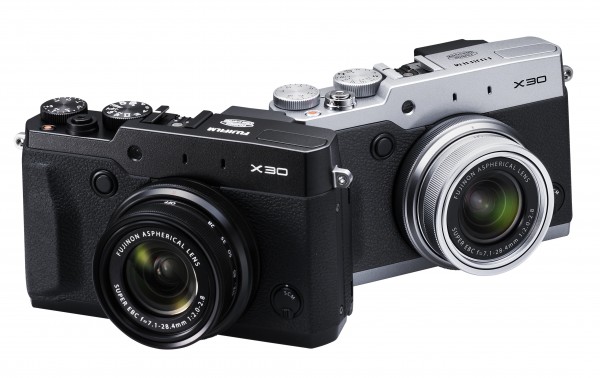Fujifilm has launched the mew X30 premium compact camera, a replacement for its well-received X20.
Priced and positioned below the company’s excellent X100S professional camera, the X30 has kept what works while adding some nifty features that even seasoned photographers will grow to love.
At first glance, the size and weight of the X30 are very similar to its predecessor. The most obvious change is the absence of the optical viewfinder.
According to Fujifilm, the accuracy of framing through an electronic viewfinder trumps the need for the speed of an optical version, given that the the refresh rate is now able to keep up with most shooting conditions.
The X30’s electronic viewfinder does have the similar 2.36-million-dot resolution that was used on the X-E2 and the flagship X-T1 cameras. Testing it yesterday at a Singapore media event, I felt the same level of comfort and performance.
The good news is, many useful features have been retained in the X30. These include the X-Trans CMOS II sensor and the 28mm-112mm f2.0-2.8 lens. Images I shot during a quick hands-on test impressed me with very good picture quality.
Ergonomics-wise, there’s not much to complain about. The X30 retains common dials and wheels for quick changes to settings. What I like is the addition of a multi-purpose dual control ring to change aperture settings, and features within a shooting mode.
For example, in Advanced filter mode, a twist of the ring lets you quickly choose your favourite type of artistic filter and apply it to an image. No need to access a complicated menu page.
Being diminutive has its pros and cons, though. While the X30 is great to carry around for holidays, for example, it may be a little tough to hold comfortably when shooting. A spacer attachment that makes the camera a bit taller would be welcome by users with bigger hands.




What has also got me excited is the inclusion of a new film simulation mode called ‘Classic Chrome’. For JPEG shooters like me, who are fans of the Velvia and Astia film simulation for vivid or portraiture shots, the Classic Chrome provides another colour filter that sits in between vivid and standard (Provia) simulation.
At first glance, it does resemble the colour characteristics of the much-loved Kodak chrome film with a slight boost of colour. Yet, it presents a more natural look overall – perfect for documentary and street photography. I just hope Fujifilm could include this Film Simulation to the older X cameras through firmware updates soon.
Out in Singapore in late September for S$899.00, the X30 will be competing with the likes of Sony’s RX100 Mark II. Both are good cameras and it won’t be an easy decision to decide a winner.






